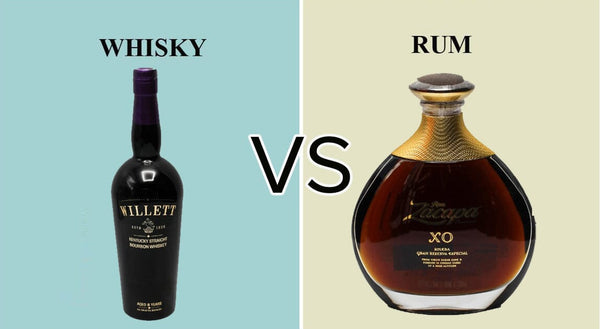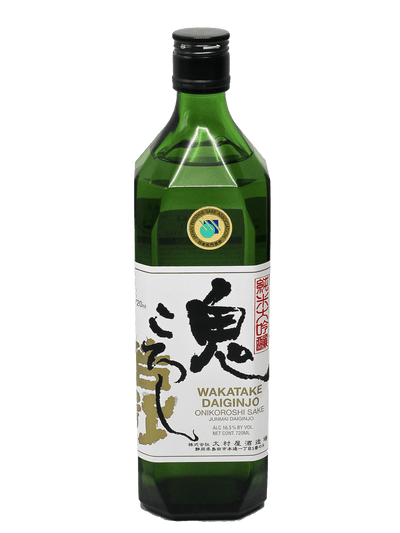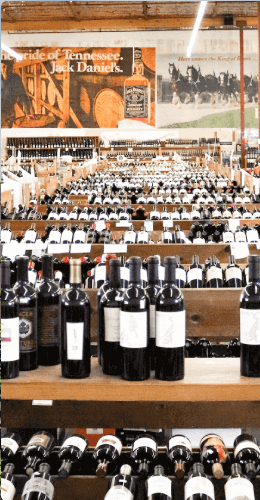Whiskey vs. Rum: What's The Difference?

Whiskey and rum are two of the most famous spirits in the world. Both are produced by distilling common fermented agricultural products. However, their similarities end there. If these spirits are both made from fermented raw materials, distilled, and then aged in barrels, what are the differences between rum and whiskey?
Rum is made from molasses, a byproduct of sugar production after it has been processed for sale.
Whiskey gets its name from Gaelic—uisge beatha—which translates to "water of life" (or alternatively "whiskey"). This article will explain everything you must know about these two spirits, including the main differences between them and recommendations for various drinking occasions.
What is Rum?
Rum is an alcoholic beverage obtained by distilling fermented sugarcane juice or molasses. The word "rum" comes from the term "rumbullion," which means "commotion." Rum is produced by distilling sugarcane juice or fermenting molasses. It is a spirit distilled from a fermented mixture of water and sugarcane byproducts (molasses, sugarcane juice, sugarcane byproducts, or sugarcane bagasse).
Expert Paul Adams explains: “Rum is a broad term, referring to liquors derived from the products of the sugar cane industry. When sugar cane is refined into sugar, the main by-product is molasses, and most familiar rums are made by fermenting molasses. An enormous variety of different rums can be made with molasses as a starting point, depending on the process used, the strains of yeast, the distillation method, and the aging.” Fortunately, when you order rum online, you can try various different types.
Most rum is produced from sugarcane, but other materials such as corn, barley, or wheat can also be used. The term "agricultural rum" is used to describe rum made from materials other than sugarcane, such as corn, barley, or wheat. It’s common in France.
Rum made its debut in Barbados in the heart of the 1650s. The island, considered the birthplace of rum, saw this Caribbean drink quickly rise in popularity. The key: its unique scents and aromas. It is made from sugarcane, with crops established in Venezuela. Its manufacturing process is almost the same as whiskey but with one difference: the quality and age of the barrels used to age the spirits.
These alcohols complete their process with aging, a very important step that involves letting the alcohol mature to develop exceptional aromatic notes. Rum is placed in new or very lightly used oak barrels, often from America. It stays there for several months to several years depending on the desired strength.
Did you know? Considered aged from 3 years old, some rums can mature for 4 to 5 years or even longer.
For tasting, we recommend the unbeatable Panamanian rum: the Plantation Bottle Barn Barrel Select Panama 2008 Single Cask Rum. This rum is exclusive to the best online liquor store.
Distilled by Alcoholes del Istmo, this limited-edition vintage rum represents the pinnacle of Panamanian rum-making artistry. Here’s a recipe for an Old Cuban: Combine 50 ml of Bottle Barn Select Panama Rum with 2 cl of lemon juice, 2 cl of sugar syrup, 5 mint leaves, and 2 drops of Angostura Bitters. Top with champagne or Prosecco to get the Old Cuban: a classic cocktail that's sweet, warm, and sparkling, perfect for sunny days.
Whiskey (and Whisky)
After a decline in popularity, whiskey is now making a comeback. In fact, you can easily buy whiskey online.
Although their processes are quite similar, there are significant production differences between the two spirits. Unlike rum, whiskey is made from grains (usually rye, barley, and wheat), and its aging is done in used barrels to impart timeless flavors.
In fact, some whiskey producers use old rum barrels, which will give whiskey spicy and fruity notes. For tasting, nothing beats a pure whiskey. To release maximum aromas, pour 2 or 3 cl of water into your glass or take regular sips of fresh water.
Paul Adams notes that “here in the U.S., we spell the whiskey we make (including bourbon whiskey, rye whiskey, Tennessee whiskey, and others) with an “e”. Irish whiskey is spelled the same. But if you pick up a bottle of Scotch, or Japanese Suntory single malt, or Canada’s purple-bagged Crown Royal, you’ll notice it’s labeled ‘whisky’ with no e. These whiskies (that’s how you spell the plural) are all distilled from grain, just like American ones. They’re just spelled differently due to fanciful quirks of history.”
For a playful cocktail using whiskey, try the European "Wapplesky": Shake 5 cl of Scotch whiskey, 2.5 cl of apple juice, and 1.5 cl of honey syrup in a shaker, serve in a whiskey glass filled with ice cubes, and you're all set!
In terms of taste, whiskeys tend to be drier and more complex than rums. The aromatic notes can vary significantly depending on their region of origin as well as their time spent in barrels. For example, a Scottish whisky often has peaty notes, while an American bourbon will have more vanilla and caramel flavors. Irish whiskeys tend to be softer and fruitier.
Rum, by contrast, has a sweeter flavor due to its natural sugar content from sugarcane. It can also have spice notes such as cinnamon or clove, as well as floral or fruity aromas depending on its place of origin.


















Leave a comment